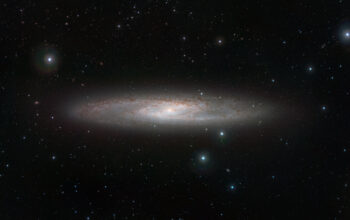In the vast expanse of the cosmos, the quest for exoplanets—especially those potentially akin to Earth—has transitioned from the realms of speculation to a tangible scientific endeavor. With over 4,000 confirmed exoplanets discovered to date, how close are we to locating a true “Earth 2.0”? The challenges persist, yet recent advancements in both observational techniques and theoretical modeling offer tantalizing prospects for a deeper understanding of distant worlds.
To commence, it is imperative to delineate what constitutes an Earth-like exoplanet. Typically, these are rocky planets residing within a star’s habitable zone, where conditions might allow for the presence of liquid water—a key ingredient for life as we know it. However, the definition is nuanced, influenced by numerous factors including atmospheric composition, planetary mass, and stellar characteristics. For instance, does “habitable zone” merely signify the right distance from a star, or must we also consider the planet’s atmospheric dynamics and geophysical processes?
As we ponder the dimensions of this search, let us entertain a playful question: If you discovered an Earth-like planet, would you be more intrigued by the possibility of encountering extraterrestrial life or the insights such a discovery might offer about our own planet’s future? This query highlights the dual nature of the search for exoplanets—one that is heavily laden with existential implications while also serving as a vital component of planetary science.
To effectively explore the cosmos, astronomers harness a plethora of instrumentation and methodologies. The transit method has garnered substantial acclaim, allowing scientists to infer the presence of exoplanets by monitoring the dimming of a star’s light as a planet traverses its field of view. This method necessitates extraordinary sensitivity, as the luminosity dips can be minuscule, often less than 1%. Telescopes such as the Kepler space telescope have been pivotal in this respect, embarking on extensive surveys that have yielded countless candidates for further investigation.
Despite the successes of the transit method, it poses inherent challenges. Determining a planet’s composition and atmosphere necessitates supplementary techniques, such as radial velocity measurements or direct imaging, each fraught with complications. The atmospheric analysis of distant exoplanets, for instance, is constrained by the limitations of current technology. Discerning the chemical signatures from light spectra during transits requires exquisite precision and often leads to ambiguous interpretations.
Moreover, recent advancements in adaptive optics and interferometry have opened new avenues for direct imaging of exoplanets. These technologies minimize the blurring effects of Earth’s atmosphere, enabling astronomers to observe distant worlds with unparalleled clarity. However, the challenge persists—how to distinguish the light reflected from a planet from that of its overwhelmingly brighter host star? This question not only pertains to instrumentation but also to theoretical frameworks guiding observational strategies.
Furthermore, the prospects that exoplanets may harbor biosignatures—indicators of potential life—broaden the scope of this inquiry. Methane, oxygen, and ozone in an exoplanet’s atmosphere could suggest biological processes. Yet, establishing the existence of these markers involves scrutinizing the planet’s atmospheric conditions with high-resolution spectra, which is currently an arduous task for even the most sophisticated telescopes. How can we improve our techniques to ensure we do not overlook critical indicators of life?
The next pivotal chapter in this quest is the forthcoming James Webb Space Telescope (JWST). Set to supersede its predecessor, JWST promises unprecedented capability to characterize exoplanet atmospheres and explore deeper questions surrounding their potential habitability. Its infrared capabilities will allow for the examination of light emitted by distant celestial bodies, presenting a transformative opportunity to detect molecules associated with life. Yet, while excitement mounts, one must ponder: what if the signals discovered demystify our preconceptions of life? Are we prepared for scenarios that contradict long-held paradigms?
As we forge ahead, the integration of artificial intelligence in the analysis of vast datasets promises to revolutionize exoplanet research. Machine learning algorithms trained to sift through immense amounts of observational data can reveal patterns otherwise obscured by human limitations. These innovations may enable scientists to catalog countless exoplanetary systems, leading to a more systematic approach in prioritizing which candidates warrant follow-up studies. However, an inherent challenge lurks—relying on machine intelligence invokes questions regarding transparency and interpretability. How can we ensure that these systems do not inadvertently perpetuate biases embedded in the training data?
Indeed, the search for Earth 2.0 encapsulates more than just scientific endeavors; it intertwines philosophical inquiries about our place in the universe. The notion of discovering another habitable world evokes notions of humanity’s survival and our responsibilities as stewards of our home planet. Moreover, it impels us to contemplate the ethical implications of interstellar exploration and the potential for contact with extraterrestrial intelligences.
In conclusion, the hunt for Earth 2.0 is a multidisciplinary endeavor that intricately combines astrophysics, planetary science, and philosophical discourse. While the challenges may appear daunting, the pursuit fosters a richer understanding of not only exoplanets but also the intricate tapestry of life on Earth itself. As we advance our observational capabilities and theoretical frameworks, the potential to unveil the myriad secrets that distant worlds hold—secrets that may ultimately illuminate our own trajectory—remains exhilarating. The universe still harbors enigmas waiting to be unraveled, and in this quest lies the promise of discovery, wonder, and perhaps an answer to the profound question, are we truly alone?










